FY2021 Annual Report
Neuronal Rhythms in Movement (nRIM) unit
Assistant Professor Marylka Yoe Uusisaari
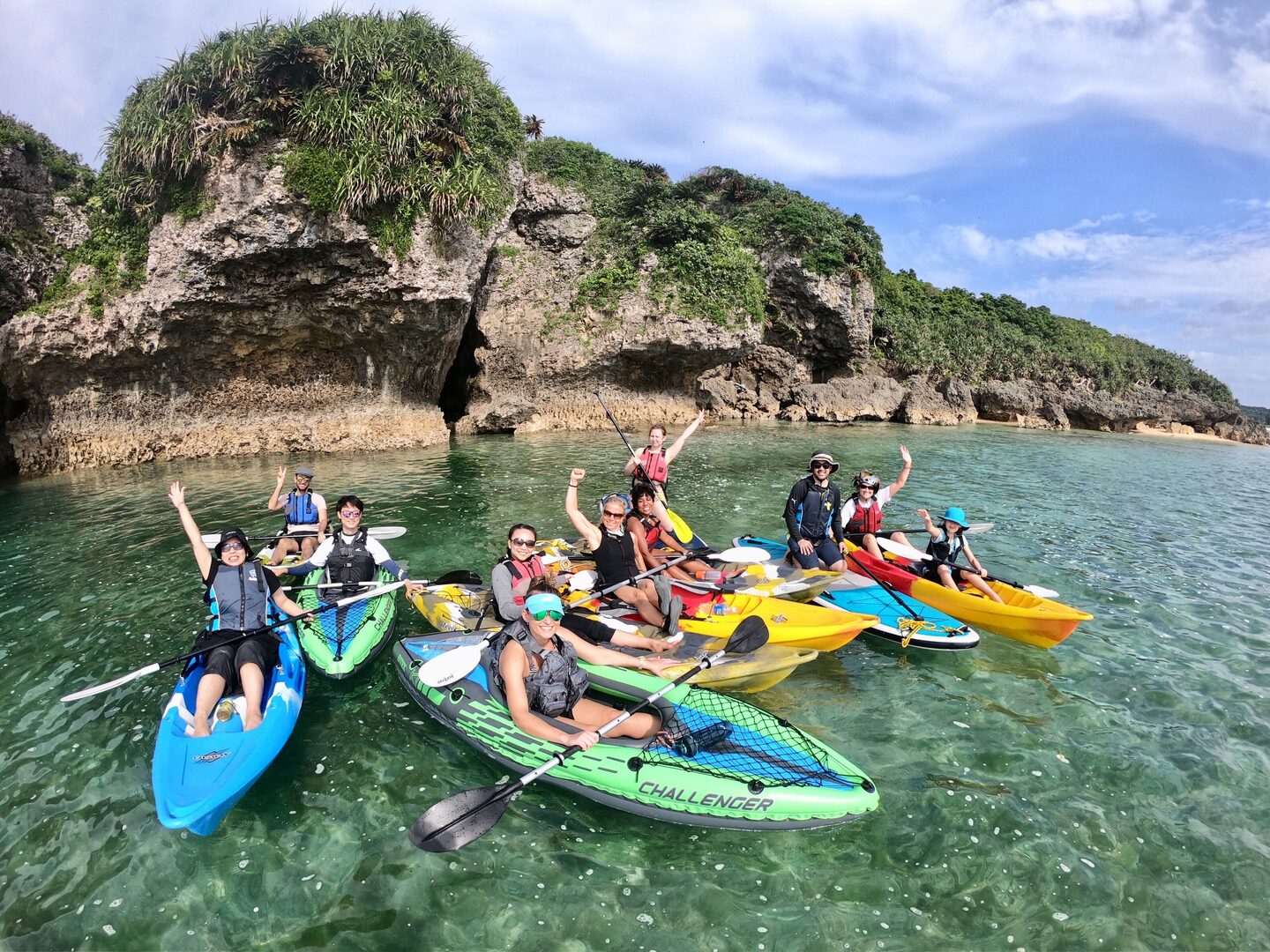
Abstract
The main accomplishment of the nRIM unit in the second year of COVID-19 pandemic is that everyone has remained alive and relatively healthy and productive througout the year, despite the mental burden of being isolated from our families, friends and recreational activities in a foreign country. This has been possible because of the entire team's commitment to supporting each other and standing in for tasks when needed. Throughout the year we have kept on working in constantly changing COVID situation, merging physical and virtual presence as demanded, adjusted our experimental and career plans, keeping focus on doing the best we can with what we have.
1. Staff
- Dr. Da Guo, post-doctoral researcher
- Dr. Kevin Dorgans, post-doctoral researcher
- Dr. Bogna Ignatowska-Jankowska, Postdoctoral Scholar
- Dr. Aysen Gurkan Ozer, Research Unit Technician
- Mr. Salvatore Andrea Lacava, PhD student (JSPS fellow)
- Ms. Lakshmipriya Swaminathan, PhD student
- Ms. Deviana David, PhD student
- Ms. Kayoko Ikeda, Research Unit Administrator
2. Collaborations
External collaborations:
- The laboratory of Dr. Benjamin Cravatt, The Skaggs Institute for Chemical Biology and Department of Chemical Physiology, The Scripps Research Institute, La Jolla, CA, USA.
- The laboratory of Dr. Sylvia Fitting at the Department of Psychology and Neuroscience at University of North Carolina, Chapel Hill
- Department of Biopharmacy at the Medical University of Lublin, Poland.
- Laboratory of Dr. Philippe Isope, INCI, CNRS, Strasbourg, France
- Dr. Aurelien Laguerre, OHSU, Portland, Oregon, USA
- The laboratory of Dr. Katarzyna Bozek, Center for Molecular Medicine, Cologne, Germany
- The laboratory of Dr. Yosef Yarom, Hebrew University of Jerusalem, Israel
Internal collaborations:
- Computational neuroscience unit (Prof. Erik De Schutter)
- Neurobiology research unit (Prof. Jeff Wickens)
- Memory research unit (Prof. Kazumasa Tanaka)
- Immune signal unit (Prof. Hiroki Ishikawa)
- Biological physics theory unit (Prof. Greg Stephens)
3. Activities and Findings
- Project: Kinematic signatures of endocannabinoid system function (Project leader: Dr. Ignatowska-Jankowska; other participants: Dr. Gurkan, Ms. Lakshmipriya Swaminathan): in FY21, the team finalized the analysis of a large dataset, aiming for publication in early FY22.
- Project: Generation of novel genetic targeting tools for in vivo use in the inferior olive (Project leader: Dr. Dorgans, in collaboration with Dr. Kurima in the Wickens unit): in FY21, several new genetic constructs were identified and validated for the specific use in inferior olive.
- Project: In vivo fluorescent imaging of inferior olive network activity (Project leader: Dr. Guo, in collaboration with Dr. Dorgans): in FY21, the project advanced significantly by incorporating results and novel tools from Project 2.
- PhD project (Salvatore Lacava): A study on the neuronal control of mouse tail in balance. In FY21, research into balance reflexes revealed novel neuromotor control pathways.
- PhD project (Lakshmipriya Swaminathan): Elucidating the organisation principles of motor control in mice using the Lagrangian formulation. Large-scale experiments completed, results presented at Astrobiology Graduate Conference.
- PhD project (Deviana David): Sensory modulation of olivocerebellar system: study of superior colliculus to inferior olive (SC-IO) Pathway. Identification of novel pathways linking the SC and IO, preparing for behavioral experiments.
4. Publications
4.1 Journals
-
League AF, Gorman BL, Hermes DJ, Johnson CT, Jacobs IR, Yadav-Samudrala BJ, Poklis JL, Niphakis MJ, Cravatt BF, Lichtman AH, Ignatowska-Jankowska BM, and Sylvia Fitting S. (2021) Monoacylglycerol Lipase Inhibitor MJN110 Reduces Neuronal Hyperexcitability, Restores Dendritic Arborization Complexity, and Regulates Reward-Related Behavior in Presence of HIV-1 Tat. Frontiers in Neurology doi.org/10.3389/fneur.2021.651272
-
Hermes DJ, Yadav-Samudrala BJ, Xu C, Paniccia JC, Meeker RB, Armstrong ML, Reisdorph N, Cravatt BF, Mackie K, Lichtman AH, Ignatowska-Jankowska BM, Lysle DT, Fitting S. (2021) GPR18 drives FAAH inhibition-induced neuroprotection against HIV-1 Tat-induced neurodegeneration. Experimental Neurology 341:113699. 341:113699. doi.org/10.1016/j.expneurol.2021.113699
-
Spaeth L., Bahuguna J., Gagneux T., Dorgans K., Sugihara I., Poulain B., Battaglia D., Isope P. Cerebellar connectivity maps embody individual adaptive behavior in mice. Nat Commun 13, 580 (2022). https://doi.org/10.1038/s41467-022-27984-8
-
Xu C, Yadav-Samudrala BJ, Xu C, Nath B, Mistry T, Jiang W, Niphakis MJ, Cravatt BF, Mukhopadhyay S, Lichtman AH. Ignatowska-Jankowska BM, and Fitting S. (2022) Inhibitory neurotransmission is sex-dependently affected by Tat expression in transgenic mice and suppressed by the fatty acid amide hydrolase enzyme inhibitor PF3845 via cannabinoid type-1 receptor mechanisms. Cells (In Press)
-
Dorgans K, Guo D, Kurima K, Wickens J.R. and Uusisaari M.Y. (2022) Designing AAV vectors for in vivo monitoring of the subtle calcium fluctuations of inferior olive network. Frontiers in Cellular Neuroscience-Cellular Neurophysiology. (Acceped) https://www.frontiersin.org/articles/10.3389/fncel.2022.825056/abstract
4.2 Books and other one-time publications
-
Dorgans K., Kuhn B., Uusisaari M.Y. (2022) In Vitro VoltageImaging of Subthreshold Activity in Inferior Olive Neurons with ANNINE-6plus. In: Sillitoe R.V. (eds) Measuring Cerebellar Function. Neuromethods, vol 177. Humana, New York, NY. https://doi.org/10.1007/978-1-0716-2026-7_8
-
Spaeth L., Gagneux T., Dorgans K., Valera A., Sugihara I., Isope P. (2022) Mapping Synaptic Connectivity in the Cerebellar Cortex Using RuBi-Glutamate Uncaging. In: Sillitoe R.V. (eds) Measuring Cerebellar Function. Neuromethods, vol 177. Humana, New York, NY. https://doi.org/10.1007/978-1-0716-2026-7_9
4.3 Oral and Poster Presentations
-
Online lecture at Waseda University, Tokyo:
Uusisaari MY "Brain states, information and emotion in body kinematics"
Date: February 4th, 2022 -
OIST Internal Seminar:
Guo Da,"Dig deep to feel the rhythms at bottom of brain: recording the inferior olive activity in alive mice"
Date: November 12, 2021
Place: L4E01,OIST and Zoom -
Poster presentation at the annual meeting of the SfN: Vrieler N, Lefler Y, Amsalem O, Medvedev N, Vaso K, Gurkan-Ozer A., Segev I, Uusisaari MY and Yarom Y. Fast depolarizing events triggered by synaptic inputs suggest activation of intrinsic regenerative currents in axonal spines. (Trainee Professional Development Award). 8-11Nov 2021
-
Online presentation at AbGradCon (Astrobiology Graduate Conference) 2021
L.Swaminathan "Mathematical measures of complexity as a marker of life" September 14th, 2021 https://www.youtube.com/watch?v=R1WZ4qxkig0 -
OIST Interal Seminar :
S.Lacava "A tale of tails: what we can learn on the neuronal control of balance"
- Date: August 13, 2021
- Place: C700, Lab 3 and Zoom -
Oral presentation at 31st International Cannabinoid Research Society (ICRS) Symposium on Cannabinoids: Ignatowska-Jankowska B, Gurkan-Ozer A., Kuck A, Niphakis M, Ogasawara D, Cravatt BF, Uusisaari MY. Distinct kinematic characteristics of MAGL and FAAH inhibition in high precision 3D motion capture analysis of freely behaving mice. Jerusalem, Israel, 21-24 June 2021
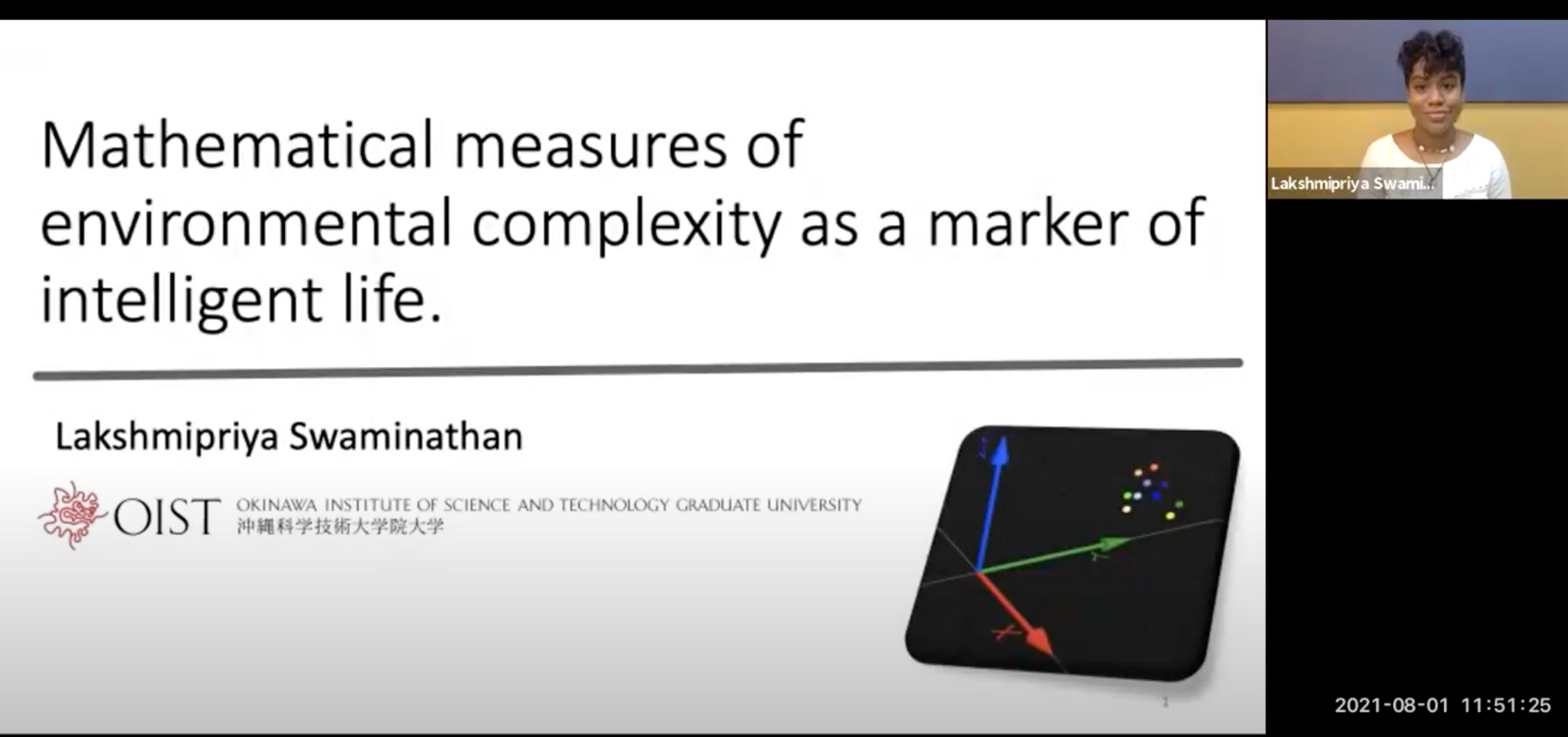
4.4 Seminars at Research Institutes
Due to COVID, several planned seminars were cancelled.
5. Other Specific Achievements
5.1 Grants
-
Prof. Uusisaari: Kakenhi Grant-in-Aid for Scientific Research (A): 身体モジュレーションと神経モジュレーションによる心身機能の改善 / as a co-Investigator of Prof.Rieko Osu
-
Prof. Uusisaari: Kakenhi Grant-in-Aid for Scientific Research (C): High-resolution spatiotemporal analysis of harmaline-induced tremor and inferior olive activity in living mice
-
Ignatowska-Jankowska BM: Kakenhi Grant-in-Aid for Scientific Research (C): In vivo imaging of endocannabinoid-regulated neuronal network activity coupled with 3D movement analysis in freely behaving mice
-
Guo D: Kakenhi grant (early career): The correlation and contribution of spatiotemporal firing pattern of inferior olive neurons to the cyclical movement
-
S.Lacava: Kakenhi Grant-in-Aid for JSPS Fellows : Understanding balance using mouse tail
5.2 Awards
- Prof. Uusisaari, Vrieler N and Gurkan-Ozer A.: Trainee Professional Development Award
Poster presentation at the annual meeting of the SfN. Fast depolarizing events triggered by synaptic inputs suggest activation of intrinsic regenerative currents in axonal spines. 8-11 Nov 2021 - Ignatowska-Jankowska BM: Postdoctoral Presentation Prize (2021) for the talk at 31st Annual International Cannabinoid Research Society Symposium on Cannabinoids (ICRS). Jerusalem, Israel (virtual event)
- Ignatowska-Jankowska BM: ICRS-NIDA trainee award to support attendance to ICRS annual meeting, 21-25 June 2021, Jerusalem, Israel
6. Other
6.1 Activities during OIST Researcher Appreciation Month (RAM)
In July 2021, the OIST Reseacher Community (ORC) organized a campus-wide networking event "RAM". Many of nRIM lab members contributed to its program and administration intensively.
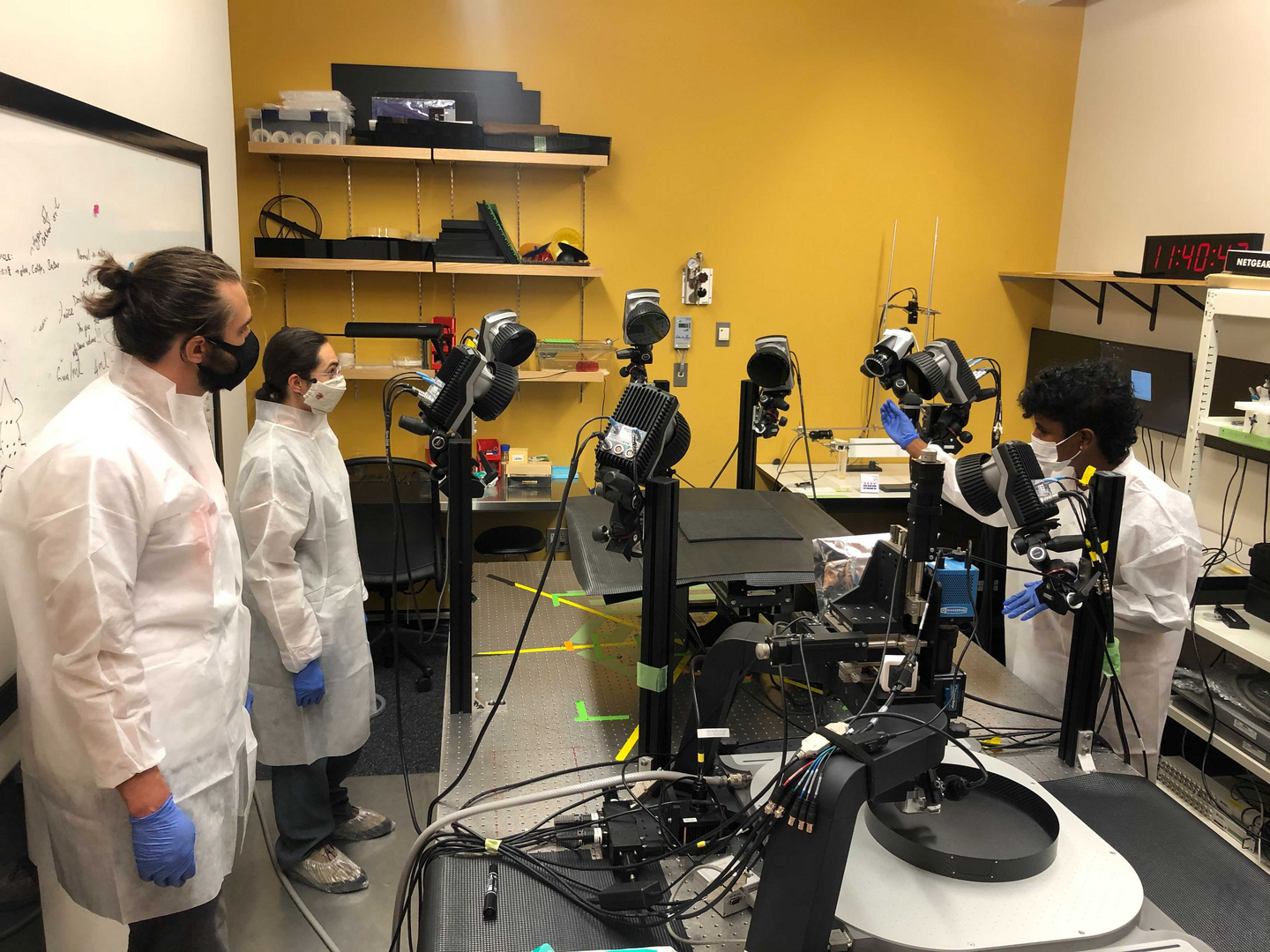
Figure 1: Lakshmi giving a lab tour in our MoCap rooms
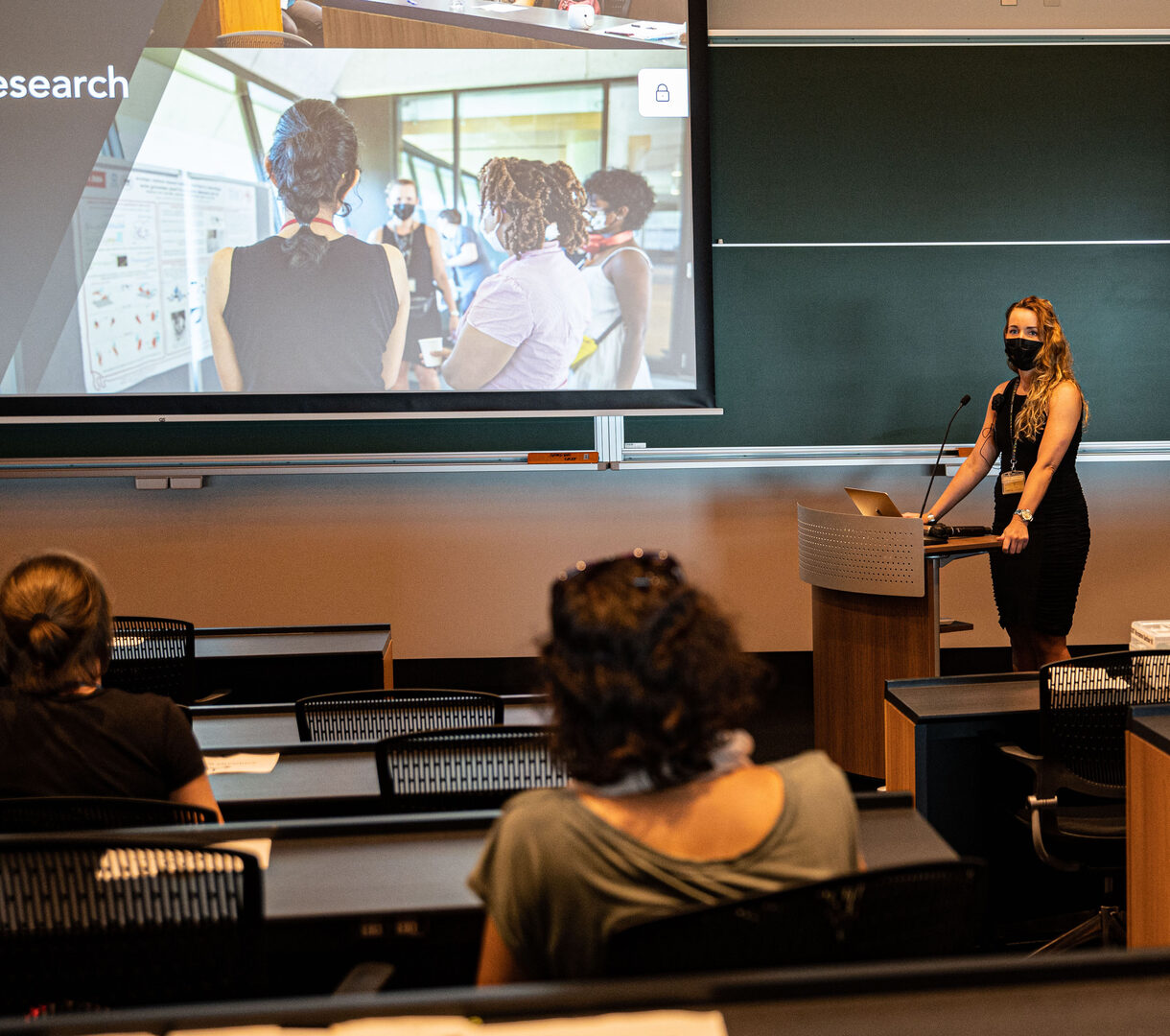
Figure 2: Dr. Ignatowska-Jankowska leading discussion sessions throughout the event
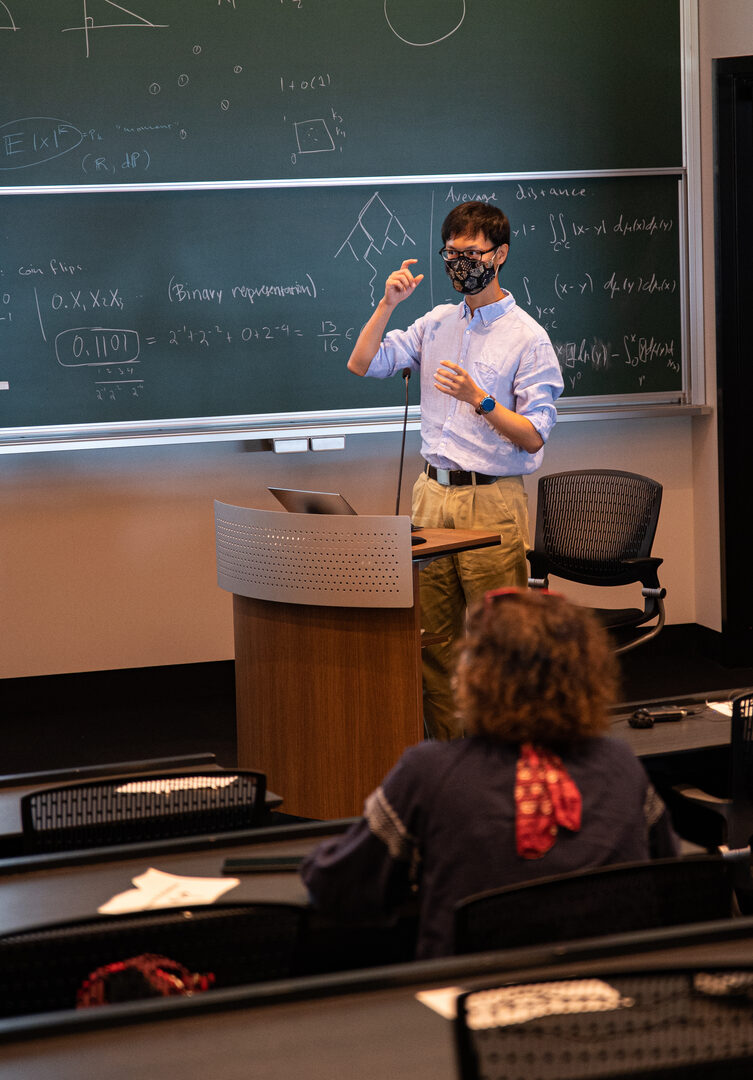
Figure 3. Dr. Guo giving a blitz presentation
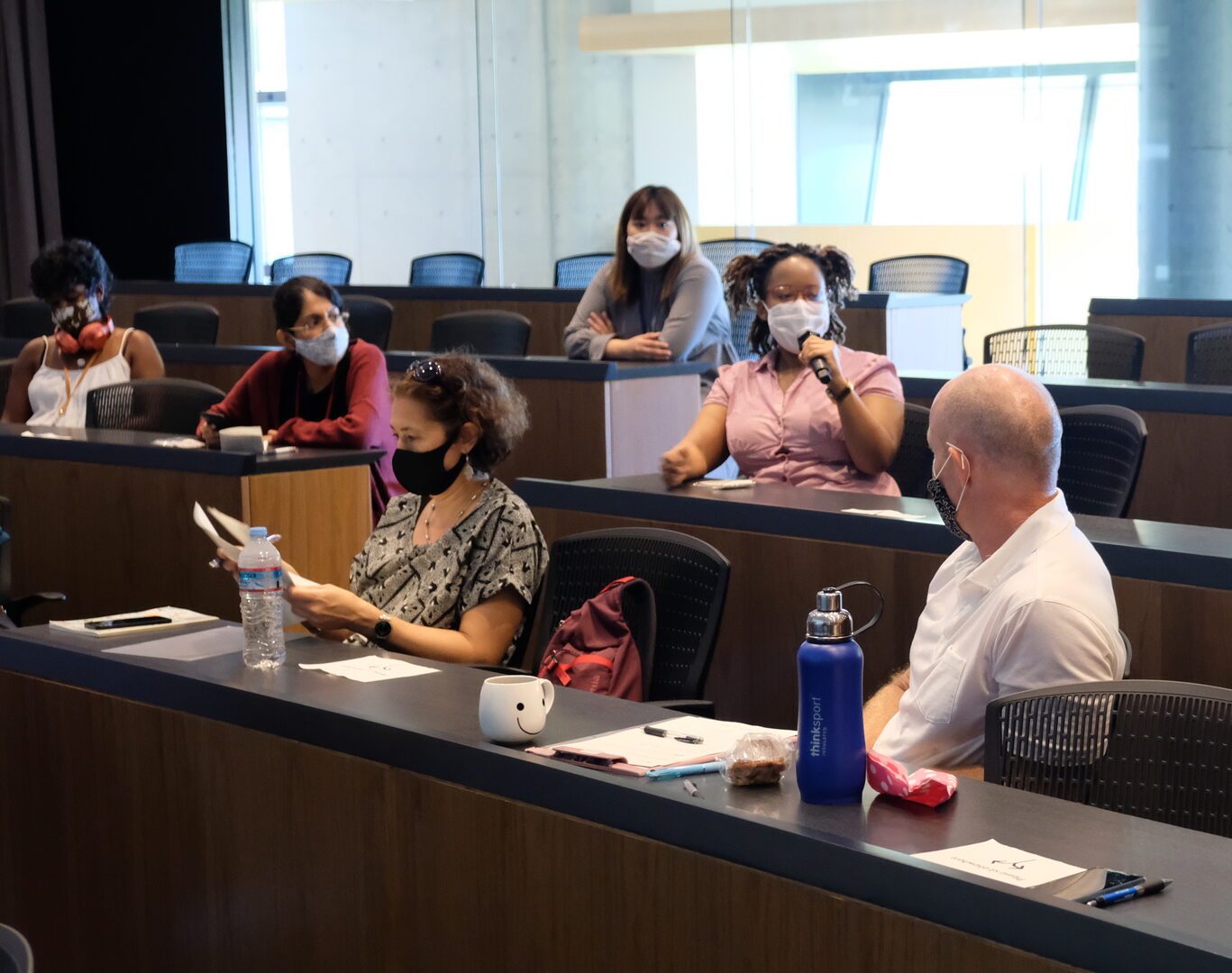
Figure 4. Dr. Gurkan-Özer served as one of the presentation judges.
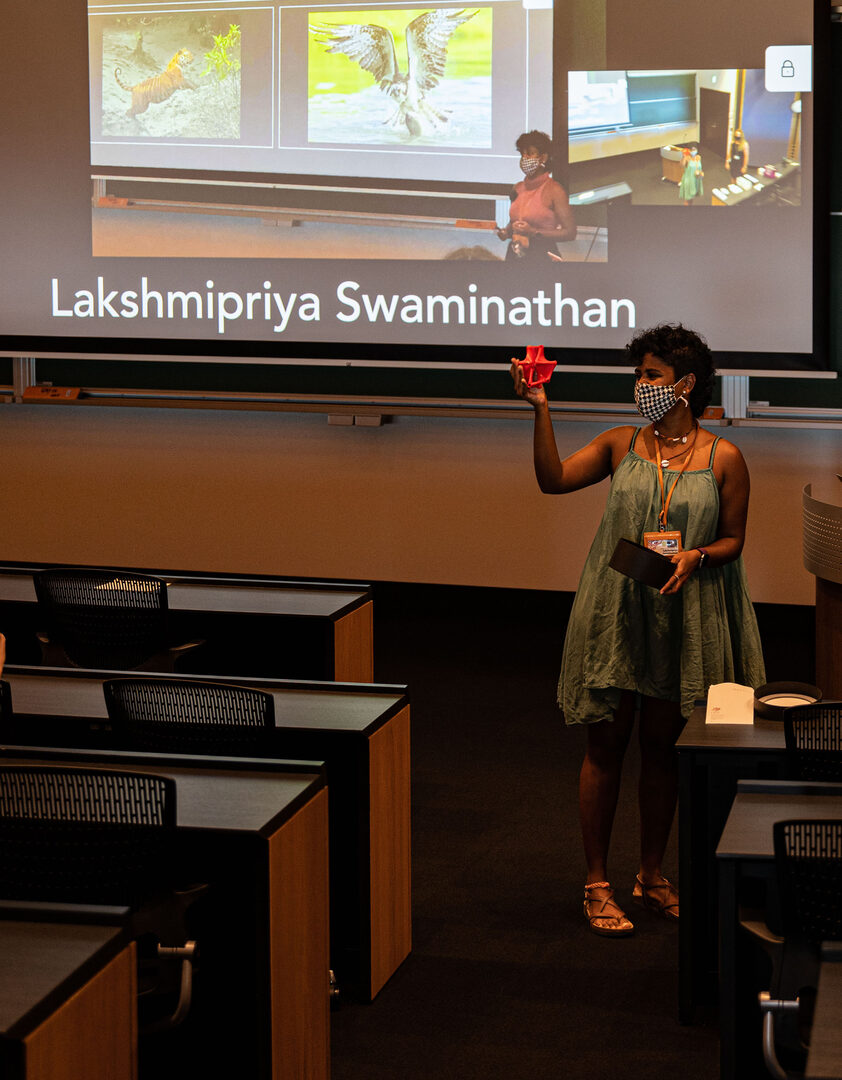
Figure 5. Lakshmi won the prize for best student presentation!
6.2 Advanced animal handling workshop at OIST
nRIM unit places great importance on therole of experimenter's animal handling expertise, not only for ascertaining animal wellbeing but also for result reliability and reproducibility. To promote this approach and to share our skills in rodent handling and experimentation with broader OIST community, nRIM (with the leadership of Dr. Ignatowska-Jankowska) organized a week-long training workshop in September 2021. The participants (students, researchers and respresentatives of the startup community) took part in daily lectures and hands-on exercises.
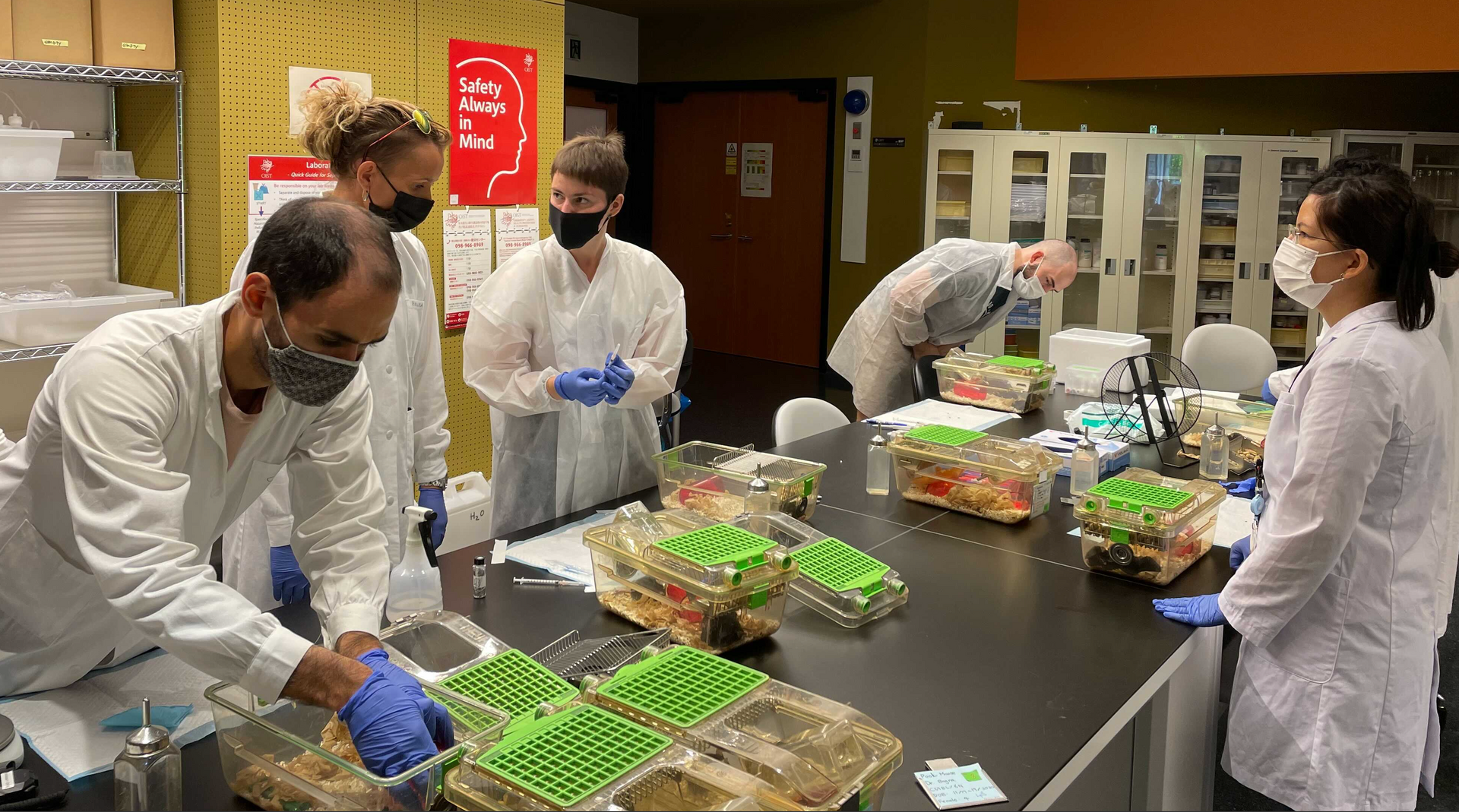
Academic service
nRIM members are engaged in various workgroups aiming to improve OIST as a place to study and work. In FY21, Dr. Ignatowska-Jankowska served in ORC and GEDI, and Lakshmi served in the OIST Student council; Dr. Gurkan Ozer served in Safety and Health Committee (SHC). Through these committees they have contributed to various academic and non-academic projects at OIST.



